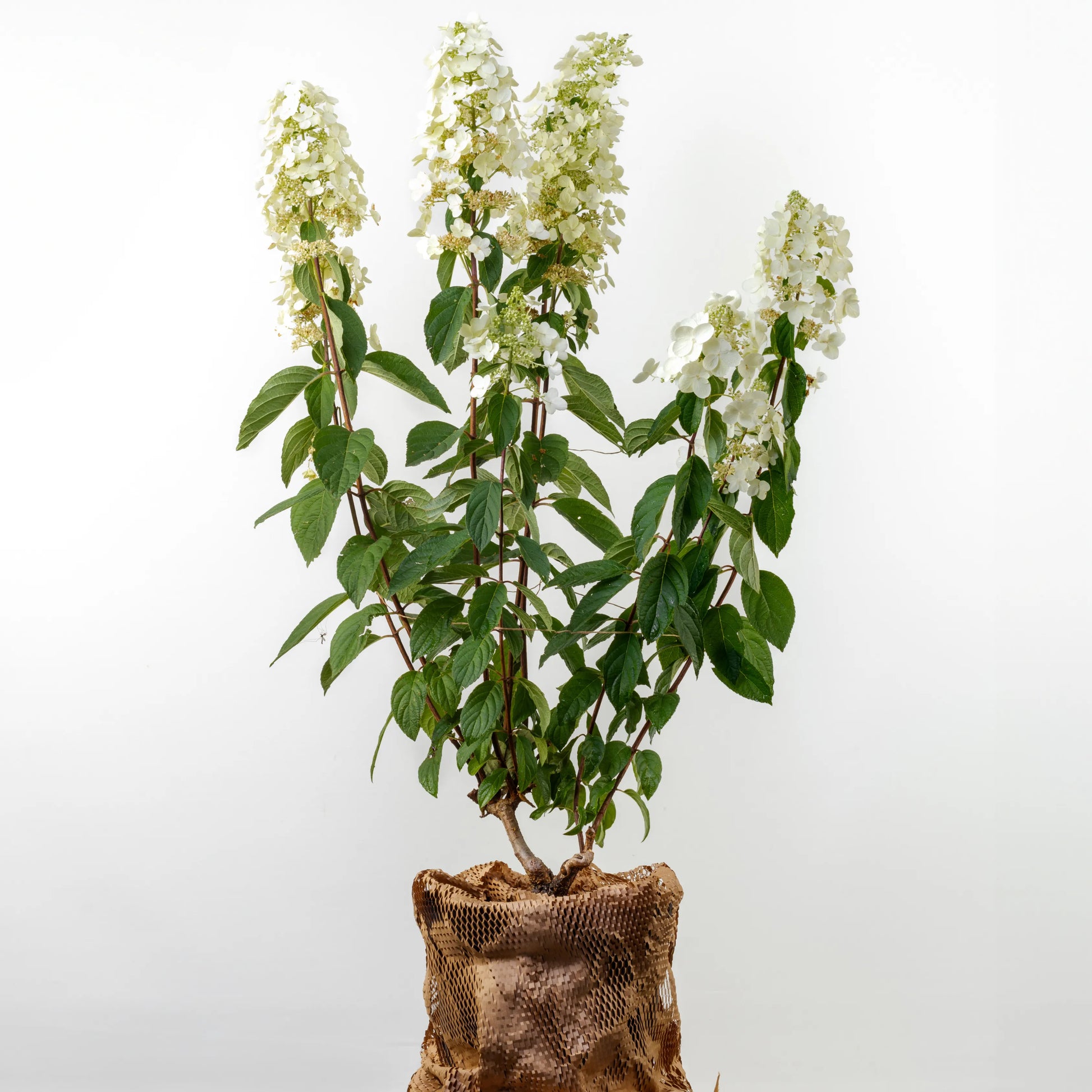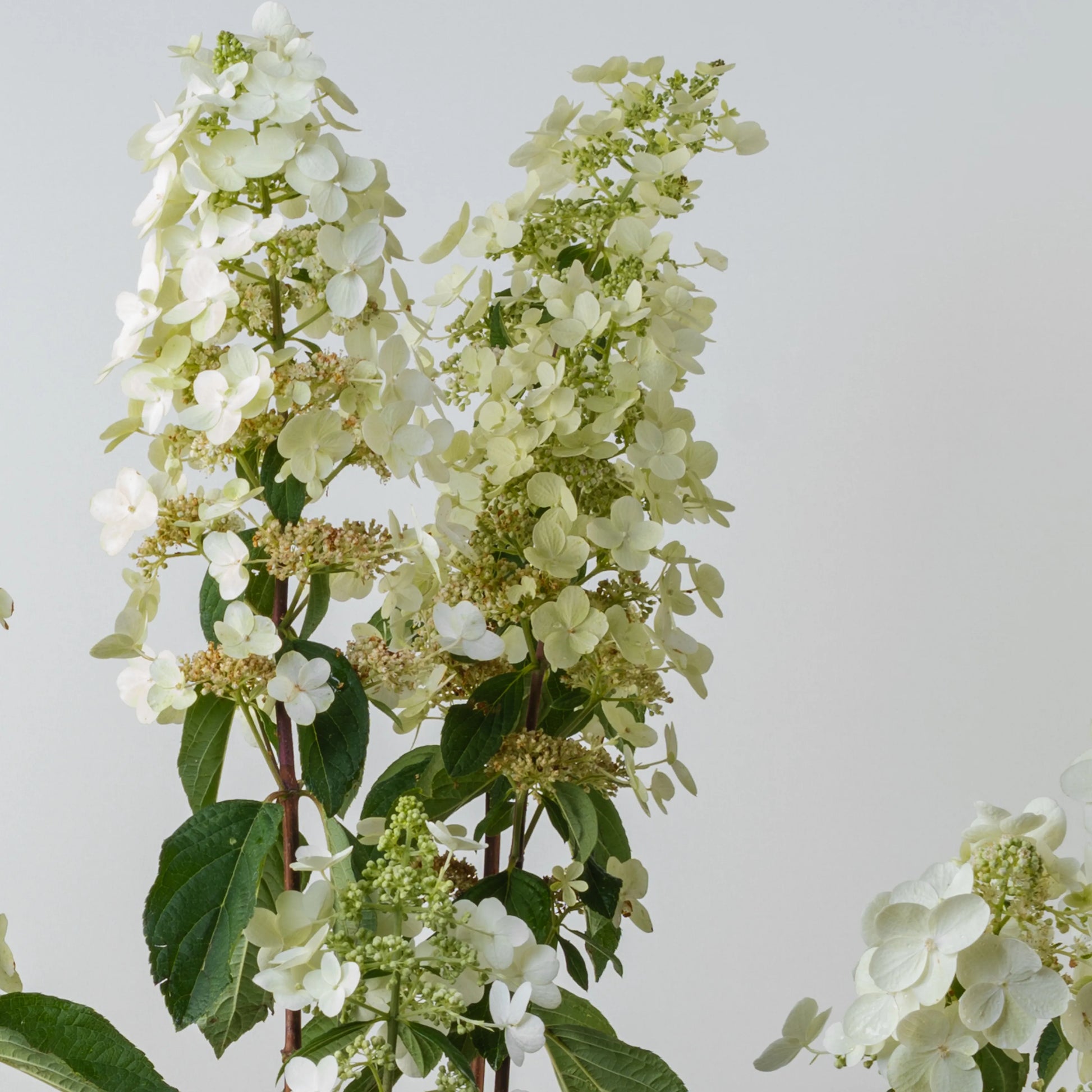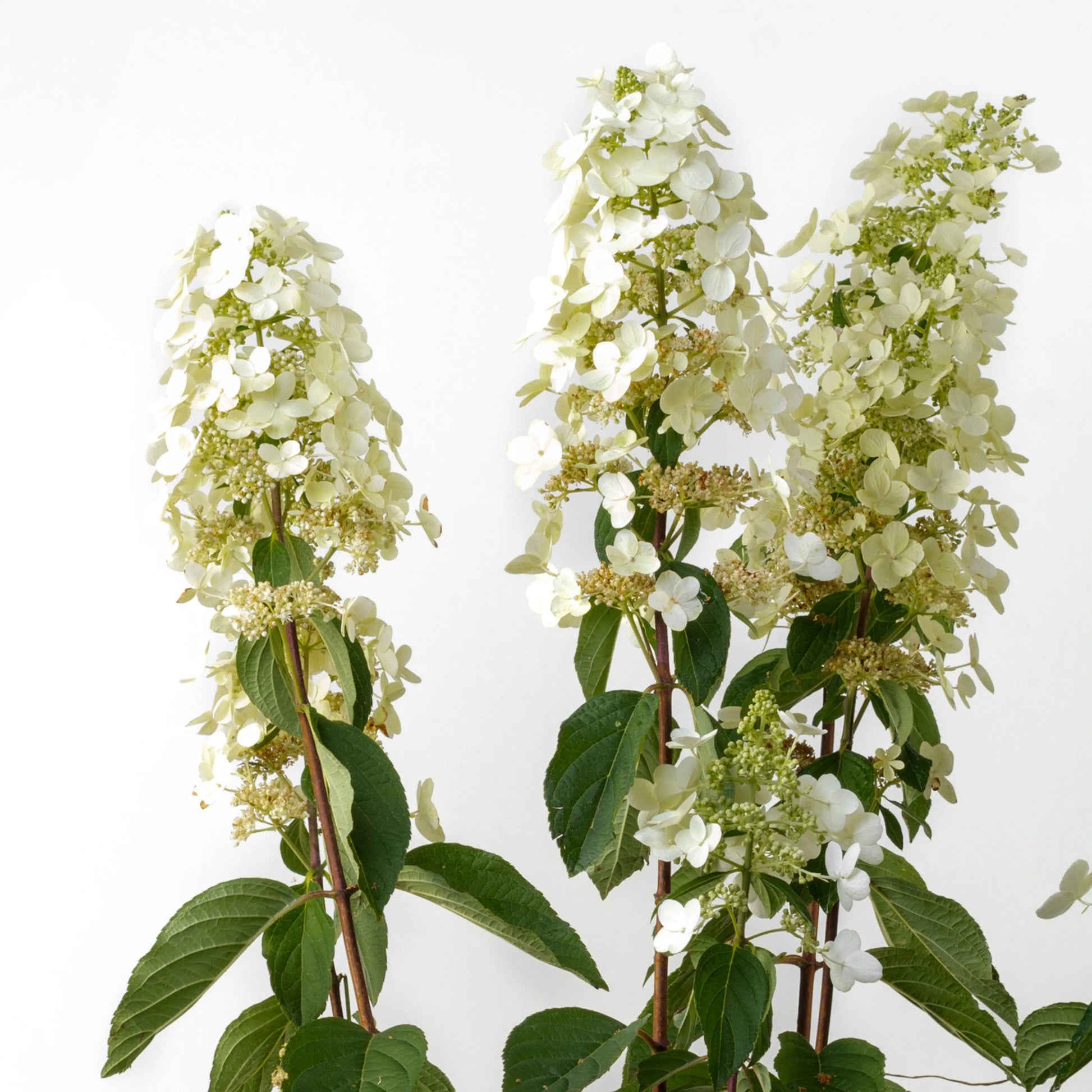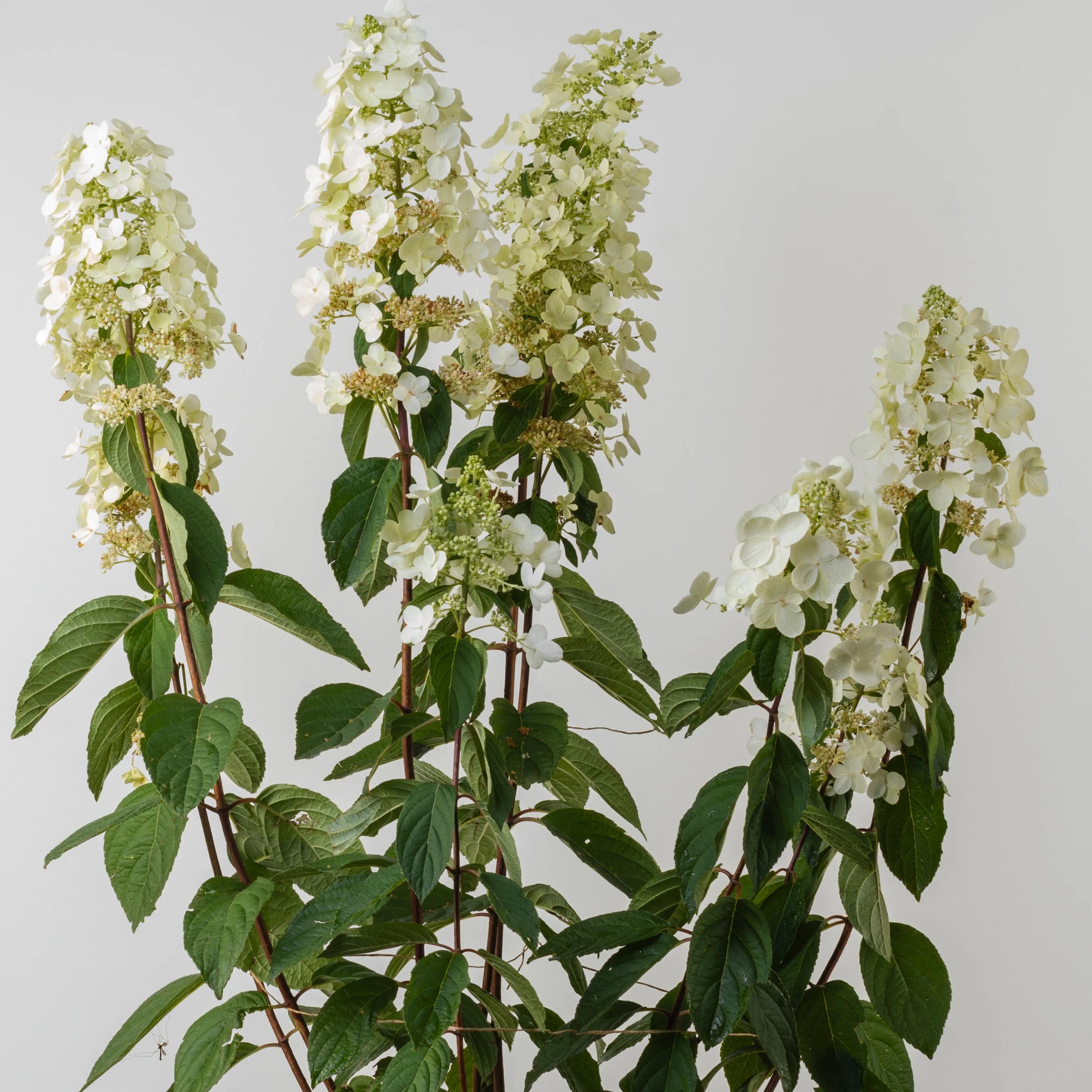Hydrangea Paniculata
Hydrangea Paniculata
Couldn't load pickup availability
Hydrangea is an ornamental shrub that can be trained to grow into a small tree. Its flowers change color with the passing of the seasons. Be careful, as it can be toxic to people and animals if ingested. The term "paniculata" in the scientific name of the hydrangea (Hydrangea paniculata) refers to the arrangement of its flowers, which grow in a branch shape.
Difficulty Care
Difficulty Care
Average
Ideal Temperature
Ideal Temperature
Hydrangea likes cool, humid environments with small seasonal and diurnal temperature differences. The best temperature for it is 18 to 29 ℃, and winter temperatures should not be lower than -1 ℃. Flower bud differentiation requires temperatures of 4 to 7 ℃ for 6-8 weeks. Flowering can be promoted at 19 ℃. Flowers wilt more quickly under high temperatures above 30 ℃.
Watering
Watering
Native to regions with moderate climates, hydrangeas have adapted to environments where there is constant moisture, but can tolerate short periods of drought. Their preference for evenly moist soil reflects the conditions of their native habitat. Watering should be adjusted to once every 1-2 weeks, ensuring that the soil remains hydrated without becoming soggy. Commonly grown outdoors due to their hardy nature, hydrangeas thrive when soil moisture levels mimic the gentle, punctual rainfall of their natural environment, promoting lush blooms throughout their growing season.
Light
Light
Hydrangea's native habitat is sparse woodland, so it is adaptable to partial shade. Too little sunlight will reduce the number of flowers or even cause no flowers to be produced, while too much sunlight can cause the flowers to burn. In gardens, the best place to plant hydrangeas is where they can receive full morning sunlight and partial afternoon shade. The cooler the climate, the more sun exposure they will need. In colder hardiness zones, at least 6 hours of sunlight per day is required. In warmer areas, where they do best, 3 hours of sunlight per day is sufficient.
Soil
Soil
Hydrangea requires humus-rich, well-drained soil. It likes moist soil, but is not resistant to waterlogging. If the soil is heavy, coarse sand or organic fertilizer can be added to improve drainage and permeability. This can also increase the organic matter content. If the soil dries out easily, cover it with organic mulch to keep it moist while maintaining ventilation.

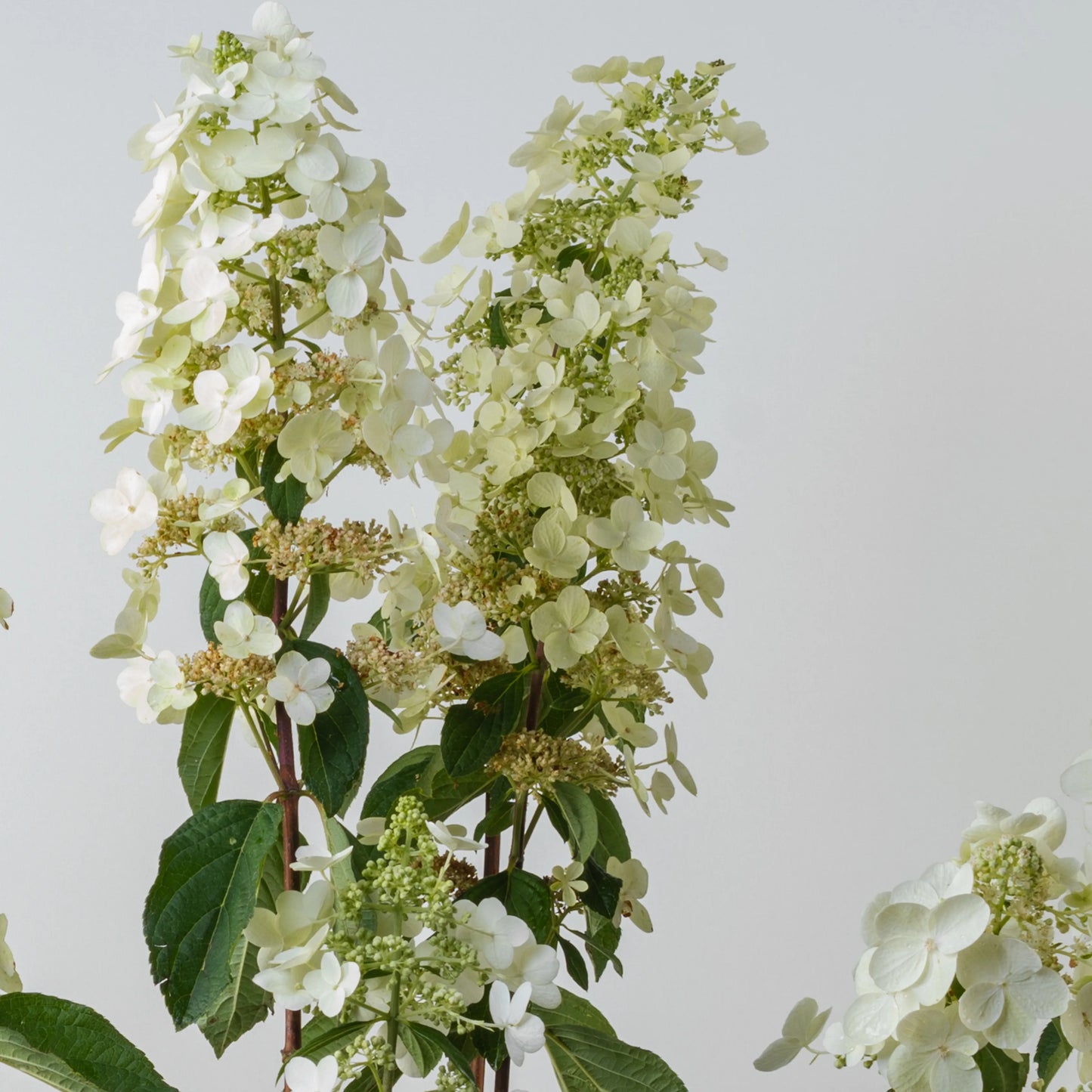
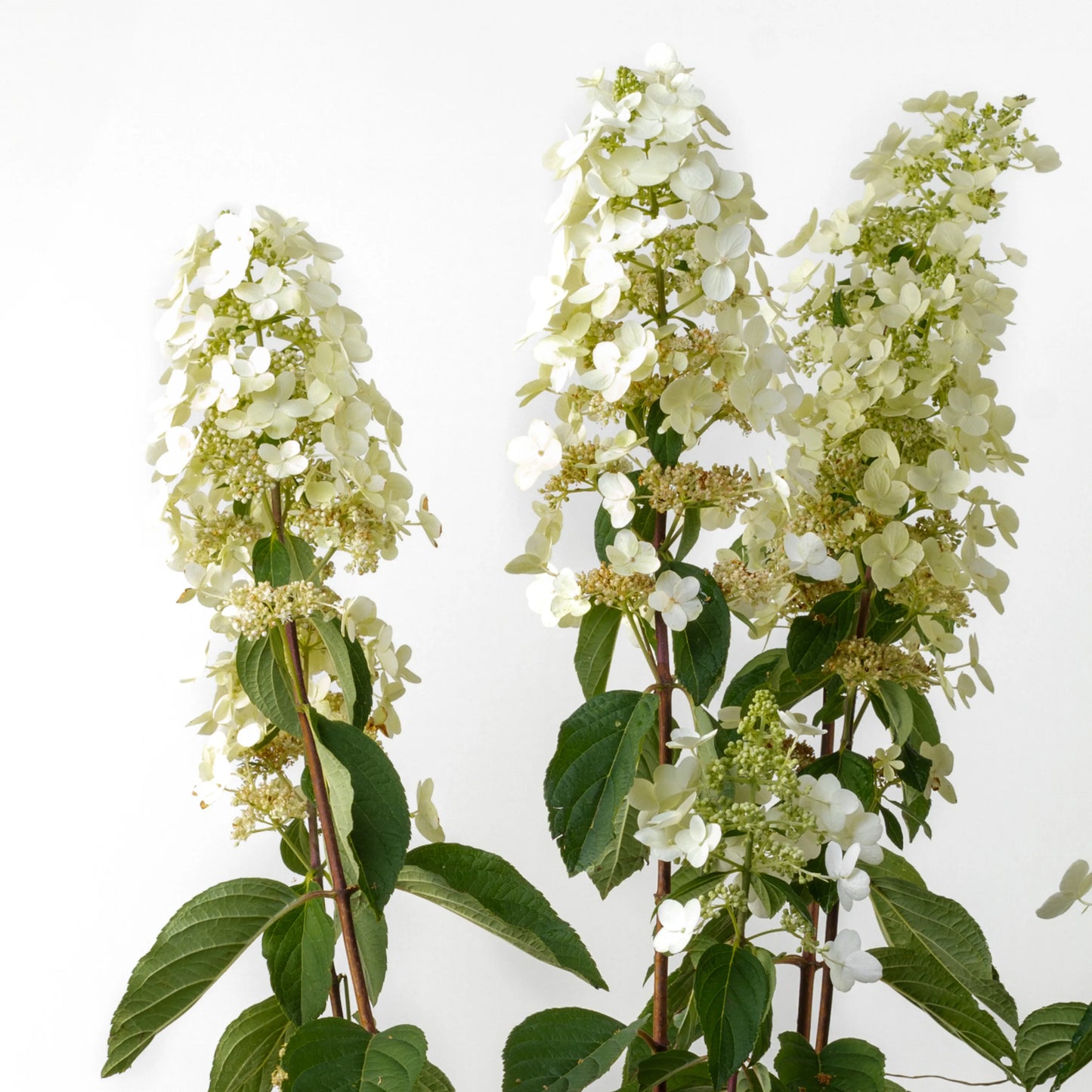

Other Information
The pH of the soil will affect the flower colors of some hydrangea varieties. Hydrangeas grown in acidic, aluminum-rich soils will bloom blue, while those in alkaline soils will bloom pink. An appropriate amount of aluminum sulfate or lime can be added to the soil to adjust the pH if you want to control the color of the flowers.

